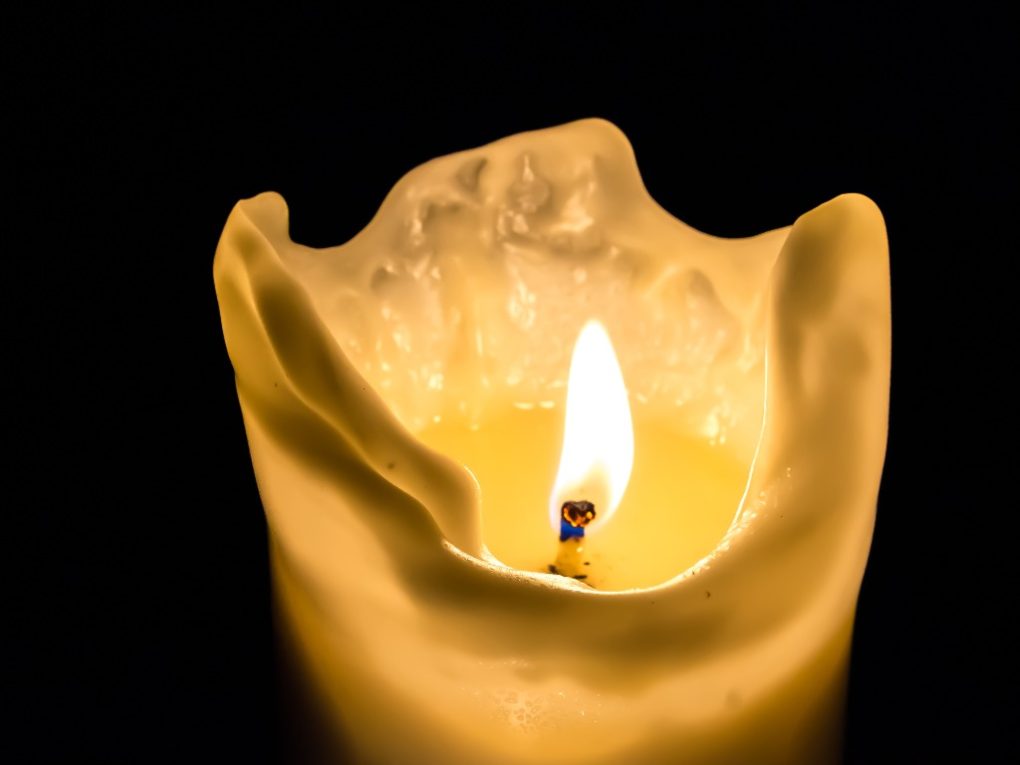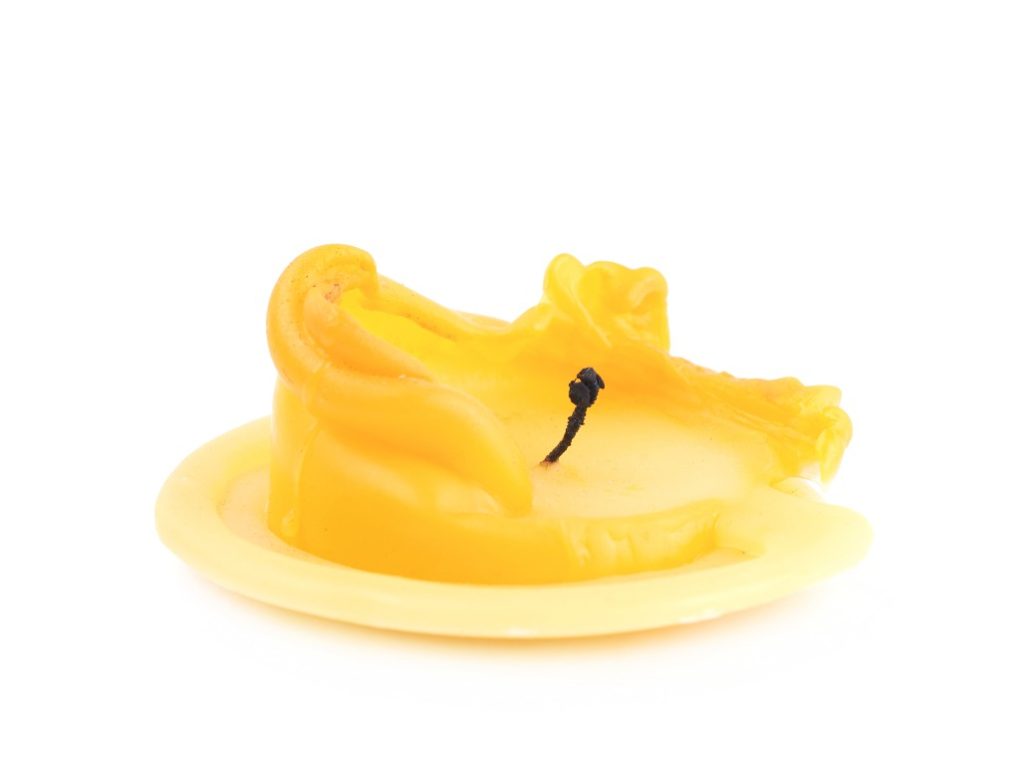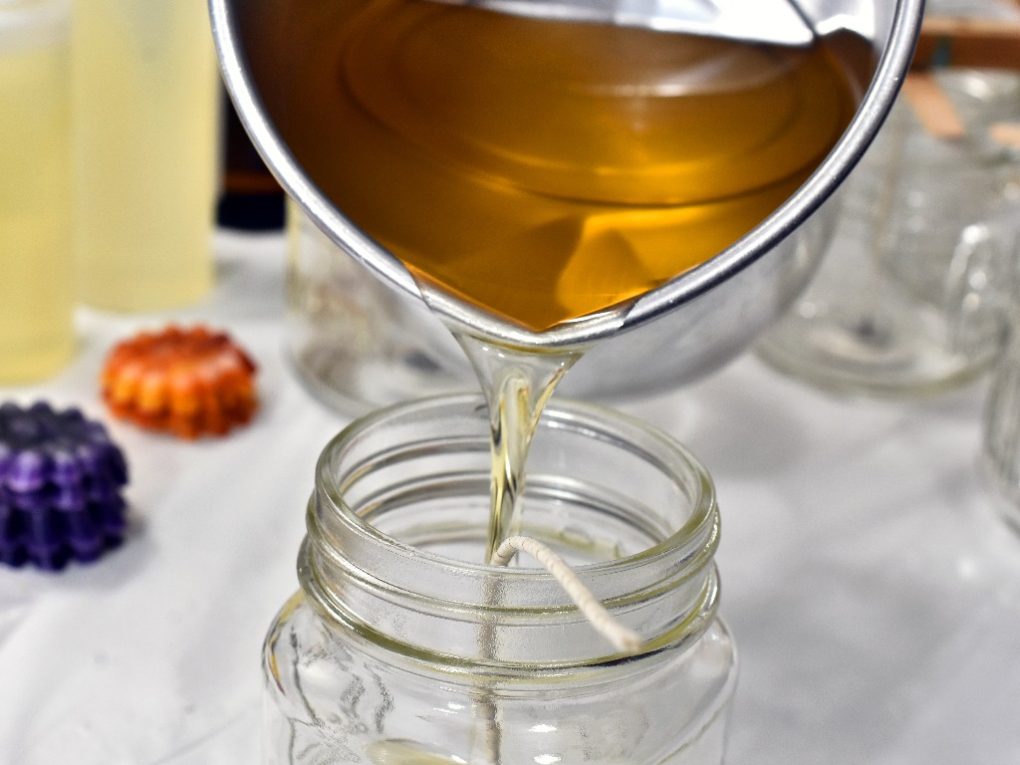What Causes Mushrooming Candle Wick and How to Fix It: Common Causes and Solutions
If a candle wick is mushrooming, the tip of the wick has developed a mushroom-shaped cap, which can lead to a larger, flickering flame and soot buildup. To fix a mushrooming candle wick, follow these steps:


- Trim the wick: Use scissors or wick trimmers to trim the wick to 1/4 inch. Make sure to trim the wick before each use of the candle.
- Remove excess wax: If there is excess wax buildup around the wick, carefully scrape it away with a knife or a wick trimmer. Be careful not to disturb the wick or damage the candle.
- Relight the candle: Once you have trimmed the wick and removed any excess wax, you can relight the candle. Make sure to allow the candle to burn long enough to create a full melt pool across the candle’s surface.
Causes of Mushrooming Candle Wick
A mushrooming candle wick is a common issue when burning candles. Understanding the causes of this problem is essential to fix it effectively. Here are some of the most common causes of mushrooming candle wicks:
Use of Low-Quality Wick
One of the most common causes of mushrooming candle wick is the use of a low-quality wick. When a low-quality wick is used, it can lead to an uneven burn, which can cause the wick to mushroom, so it is essential to use a high-quality wick that is suitable for the size of the candle to prevent mushrooming.
Draft Issues
Drafts can also cause mushrooming candle wick. Based on experience, a draft in the room can cause the candle to burn unevenly, leading to wick mushrooming. Therefore, it is essential to avoid placing candles near open windows or doors and to keep them away from fans and air conditioning vents.


Wax Additives
Using too many additives in the candle wax can also cause mushrooming candle wick. When too many additives are used, it can lead to an uneven burn, which can cause the wick to mushroom. Therefore using the right amount of additives in candle wax is essential to prevent mushrooming.
Fragrance Oils
Fragrance oils can also cause mushrooming candle wicks. When too much fragrance oil is used, it can lead to an uneven burn, which can cause the wick to mushroom. Using the right fragrance oil in candle wax is essential to prevent mushrooming.
Wax Type
The type of wax used in candles can also cause mushrooming candle wick. Some waxes are more prone to mushrooming than others. Therefore, it is essential to use wax suitable for the candle’s size and follow the manufacturer’s instructions carefully.
Tips to Fix Mushrooming Candle Wick
Trimming the Wick
When you notice that the wick on your candle has mushroomed, the first thing you need to do is trim it. Then, using scissors, trim the wick to about 1/4 inch (0.6 cm) in length. This will help reduce the amount of carbon buildup on the wick and prevent it from mushrooming again.
Choosing the Right Wick
Choosing the right wick for your candle is crucial in preventing mushrooming. Based on observation, you need to select a wick that is appropriate for the size of your candle and the type of wax you are using. For example, a wick that is too small can cause tunneling, while a wick that is too large can cause mushrooming.
Adjusting the Wax Formula
You can adjust the wax formula to prevent mushrooming if you make your candles. Avoid using too many additives in the wax, as this can cause the wick to pull up more wax than it can burn, leading to carbon buildup and mushrooming. Instead, use a wax designed for candle making and follow the manufacturer’s instructions.


Using a Wick Trimmer
A wick trimmer is a handy tool that can help you trim your wick to the right length, preventing mushrooming. Hotel Collection says the Wick trimmer lets you reach the wick inside. It is designed to trim the wick without disturbing the wax or causing it to bend or break.
Avoiding Drafts
Another way to prevent mushrooming is to avoid placing your candle in a drafty area. Drafts can cause the flame to flicker and burn unevenly, leading to carbon buildup on the wick. Place your candle in a stable, draft-free area to ensure a clean burn.
Tips to Have Candle Without Mushrooming Candle Wick
Choose a High-Quality Wick
Choosing a high-quality wick ensures your candle burns cleanly and evenly without producing excess soot or mushrooming. When selecting a wick, consider the type of wax you are using, the diameter of your candle, and the desired burn time.
A high-quality wick should be made from natural materials such as cotton or hemp and designed specifically for the type of wax you use (e.g., soy wax, beeswax, paraffin wax, etc.).
It’s also important to choose the correct wick size for your candle. For example, a wick that is too small may not burn hot enough to create a complete melt pool, while a wick that is too large may produce excess soot or mushrooming. Instead, use a wick sizing chart or consult with your wick supplier to determine the correct wick size for the diameter of your candle.


Finally, make sure to purchase wicks from a reputable supplier that provides detailed information about their wicks, including the materials used, recommended burn time, and recommended use with specific wax types. Choosing a high-quality wick ensures a cleaner, safer, and more enjoyable candle-burning experience.
Size the Wick Correctly
Sizing the wick correctly ensures your candle burns cleanly and evenly without producing excess soot, smoke, or mushrooming. For example, a wick that is too small may not burn hot enough to create a complete melt pool, while a wick that is too large may produce excess soot or mushrooming.
You can use a wick sizing chart or consult your wick supplier to size your wick correctly. The chart will guide the correct wick size based on your candle’s diameter and the wax you are using.
It’s important to note that different types of wax may require different wick sizes. For example, soy wax may require a larger wick size than paraffin wax. Other factors, such as the fragrance load and the colorants used in the wax, may also affect the size of the wick needed.
To avoid sizing the wick too small or too large, it’s recommended to test burn your candles with different wick sizes before making a final decision. This will help you find the right wick size for your candle and wax combination.
